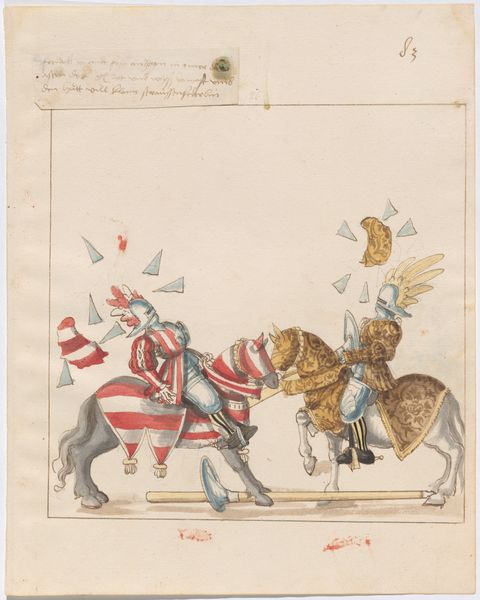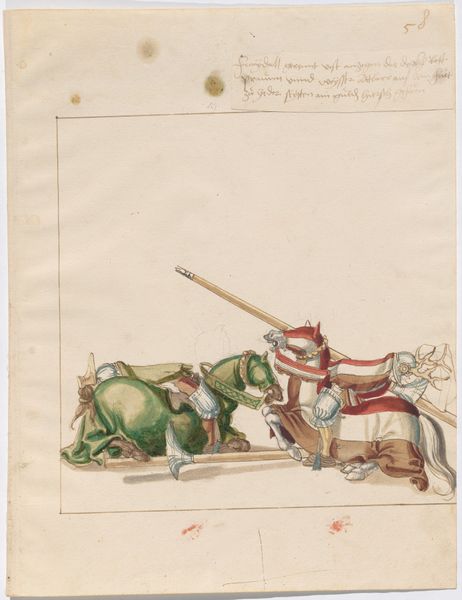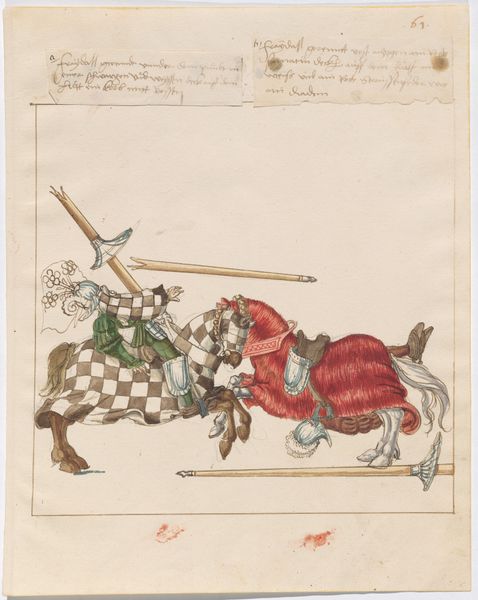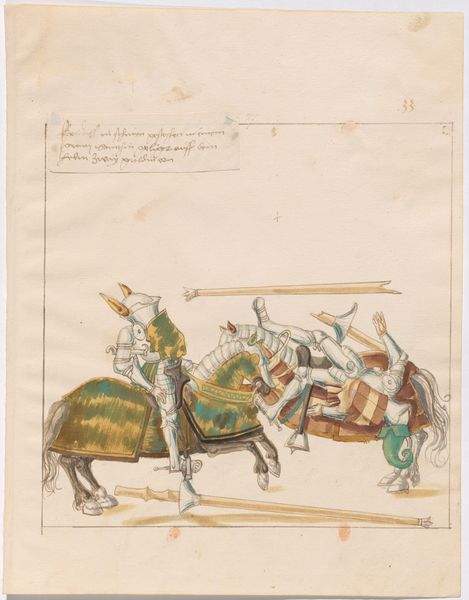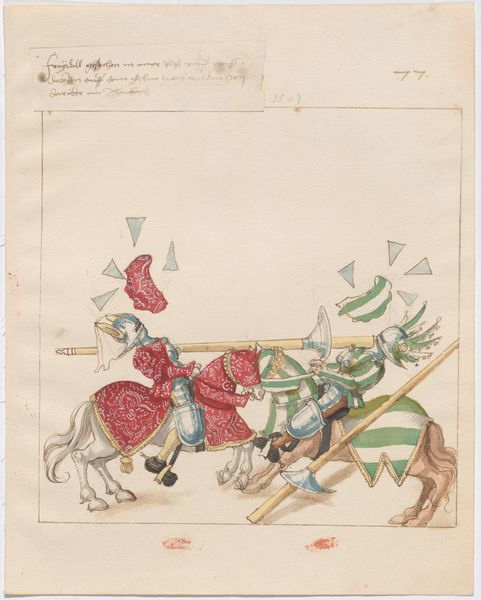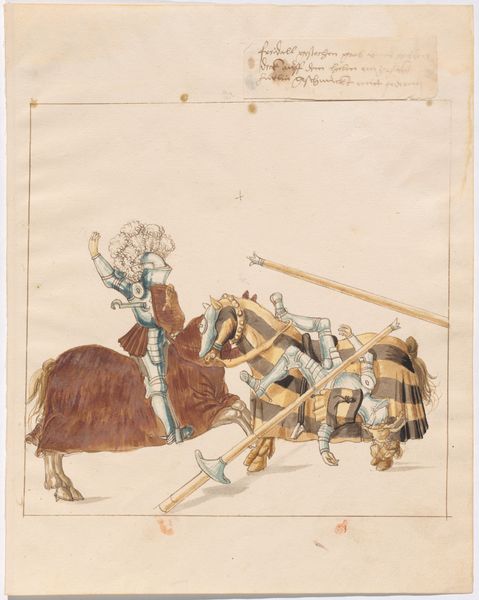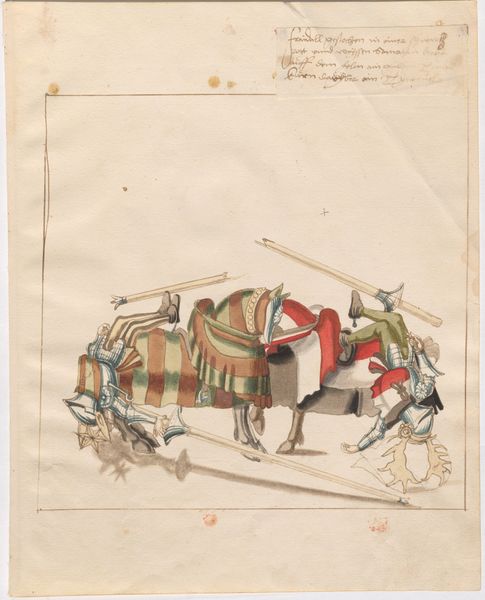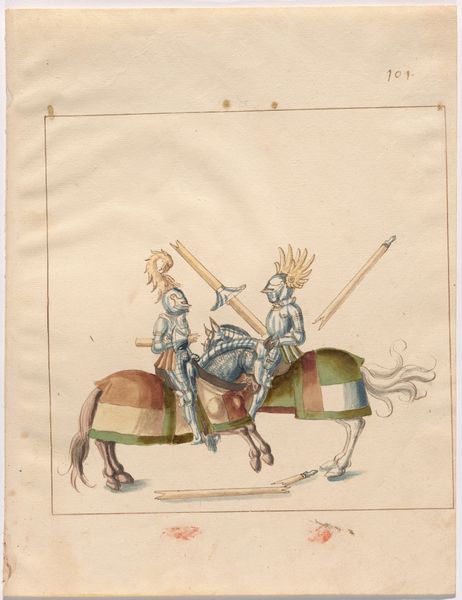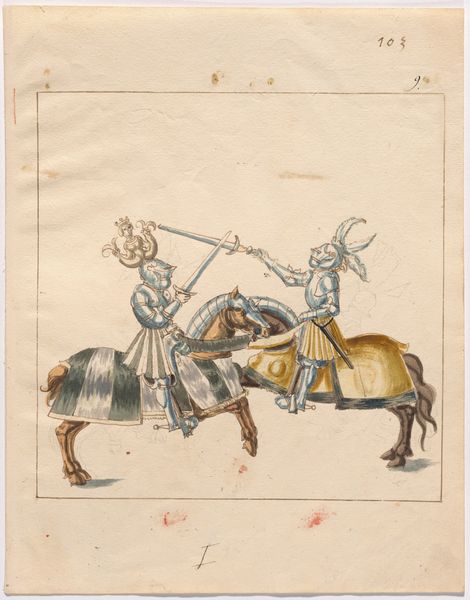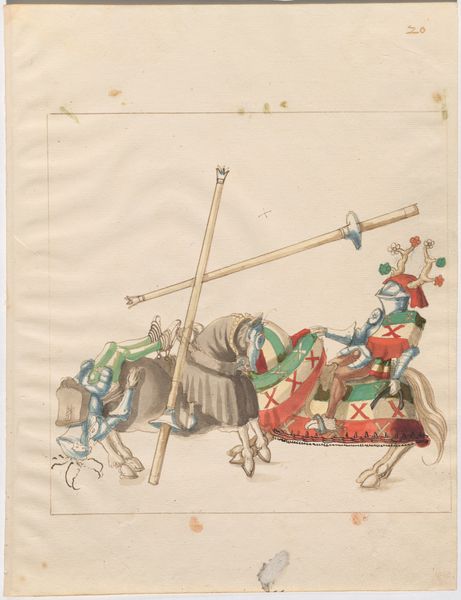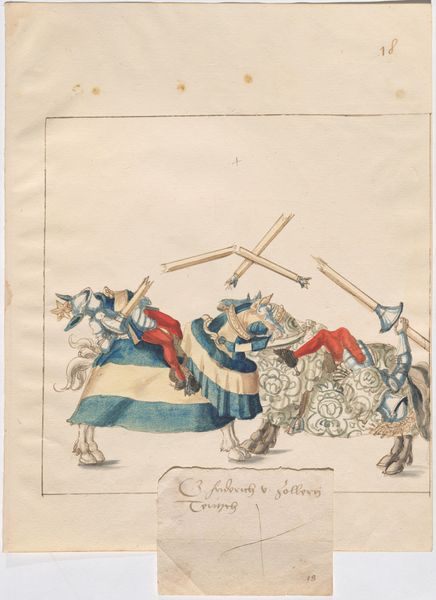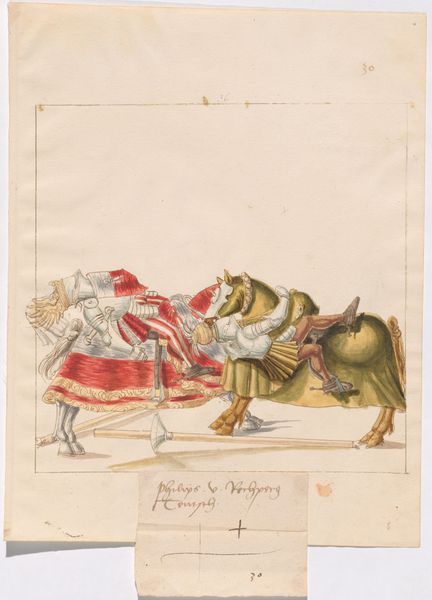
drawing, coloured-pencil, watercolor
#
drawing
#
coloured-pencil
#
medieval
#
water colours
#
11_renaissance
#
watercolor
#
coloured pencil
#
genre-painting
#
watercolor
Dimensions: sheet: 33.6 × 26.4 cm (13 1/4 × 10 3/8 in.)
Copyright: National Gallery of Art: CC0 1.0
Editor: Here we have "Mock Joust of War with Fixed Shields," a drawing from around 1512-1515, by an anonymous artist. It's watercolor and coloured pencil on paper. I find it intriguing how dynamic the composition is, despite the relatively limited colour palette. What catches your eye in this piece? Curator: Formally, the composition presents a fascinating study in contrasts. Observe how the artist employs opposing diagonal lines to create a sense of implied motion and tension between the two jousting figures. Notice the stark difference in the rendering of textures: the soft washes of colour in the horses versus the sharper lines defining the armor. Does this distinction enhance or detract from the work's overall cohesiveness, in your opinion? Editor: I think it adds to it. The textural contrasts make each figure stand out. The lines add definition. It makes you notice that it is a mock battle! How are the lines helping you see what is going on? Curator: Precisely! The strategic placement of the lances and the horses' stances guide our gaze, creating a cyclical visual pathway that accentuates the energy of the conflict. I'm interested in the function of the vacant upper register. Does it serve merely as negative space, or does its emptiness play a crucial part in defining the implied narrative of the artwork? Editor: I'd say the emptiness draws more attention to the movement below, the action. Curator: An astute observation! This minimalist backdrop enables us to concentrate on the interplay of forms and colors within the central figures. The artist effectively wields these compositional tools to portray movement and the drama of a joust. Editor: This has been a wonderful way to focus on composition. It really enhances the impact of the scene! Curator: Indeed. By deconstructing the piece into its fundamental visual components, we gain a more profound insight into the artistic choices and intended effects of the artist.
Comments
No comments
Be the first to comment and join the conversation on the ultimate creative platform.
